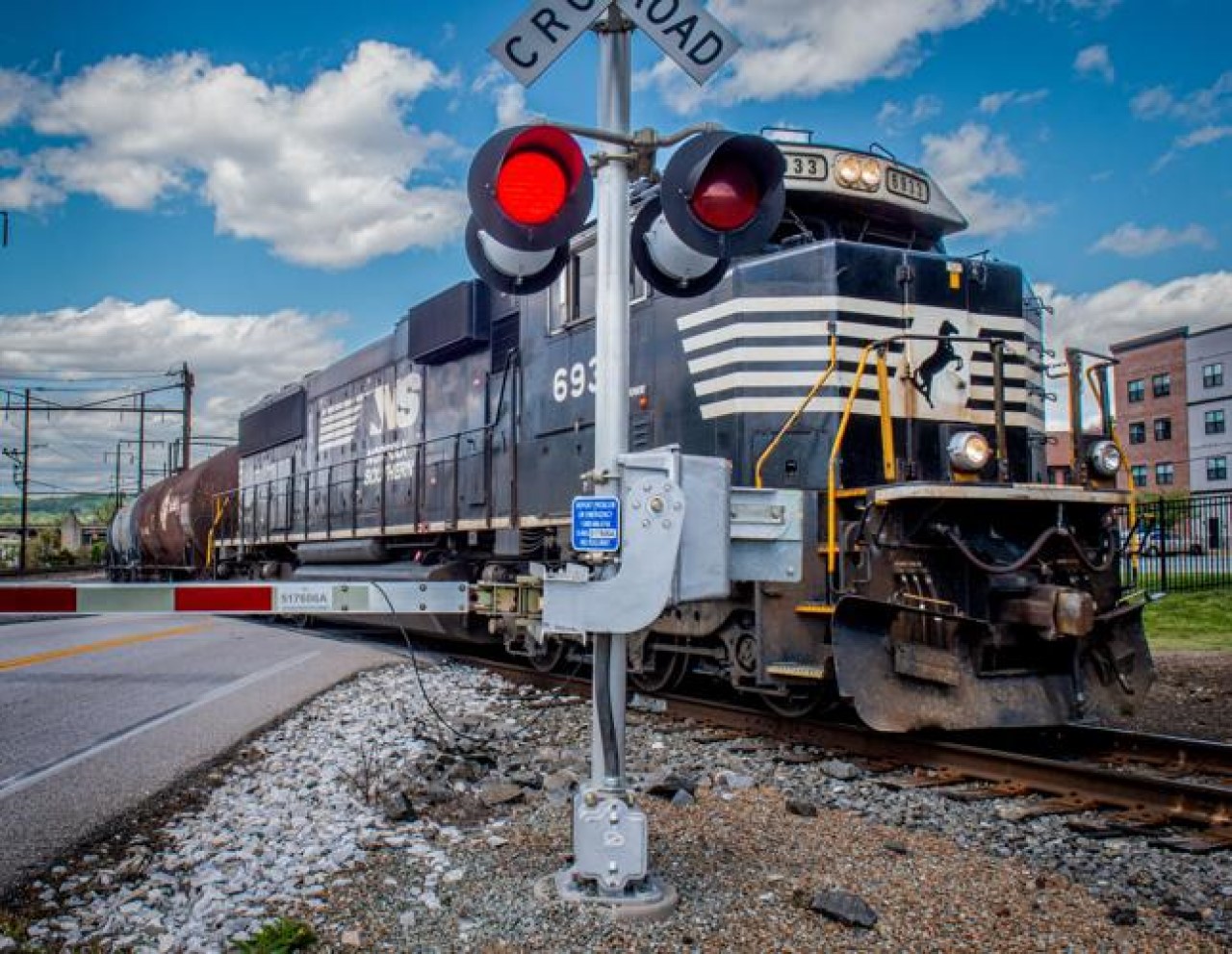
A Norfolk Southern train crosses Front Street In Columbia Borough Monday, April 17, 2023.
Blaine Shahan / LNP | LancasterOnline

A Norfolk Southern train crosses Front Street In Columbia Borough Monday, April 17, 2023.
Blaine Shahan / LNP | LancasterOnline

Blaine Shahan / LNP | LancasterOnline
A Norfolk Southern train crosses Front Street In Columbia Borough Monday, April 17, 2023.
Airdate: July 25th, 2023
The Norfolk Southern train derailment in East Palestine, Ohio last February was a wake-up call for many across the country.
Firefighters who responded to that scene didn’t know what materials or chemicals were contained in the tanker cars of the freight train after they ran off the tracks.
Thousands of residents in the town on the Ohio-Pennsylvania border evacuated. Three days after the derailment, the decision was made to release toxic vinyl chloride from five tank cars and burn it to keep them from exploding.
Every day, trains pass through our local neighborhoods and near our homes and schools and we really don’t know what they’re hauling.
Reporters for LNP | LancasterOnline and WITF sought detailed information about train cargo in a series called Toxic Trains. LNP reporter Ann Rejrat investigated what we know about freight trains and what they haul through Lancaster County and other Central Pennsylvania counties as well and said on The Spark Tuesday the information on what trains are hauling isn’t easy to get, “The information belongs to the private train companies themselves, and they are not required to share that information unless something such as a derailment happens. So what happens with a derailment is responders show up to this scene. You’re looking at firefighters, the people in the community are going to come to respond to the scene. And when they respond, they have a few options, none of it streamlined. They can use what’s called the Ask Rail app, which is not mandated or they have to get a hold of what’s called a manifest on the train, which should be near the engineer.” That manifest may not be accessible if an engineer is injured or the train has been damaged.
Federal and state governments are working on ways to rectify the lack of information as Reyrat explained,”Things like creating a database that holds all the information. And then when there is a situation, any type of hazmat release, it can get pushed out to local responders. What happens with that if it actually does happen? That’s all on the federal and state level right now. But there are proposals to try to fix it, to try to get the information faster. But none of those changes have actually started to happen.”
The LNP/Lancaster Online/WITF investigation found counties don’t know what’s on trains traveling through their areas on a daily basis, although some have records of materials that have been hauled through those counties in past years.
The days of journalism’s one-way street of simply producing stories for the public have long been over. Now, it’s time to find better ways to interact with you and ensure we meet your high standards of what a credible media organization should be.